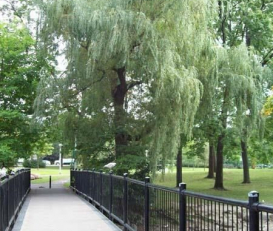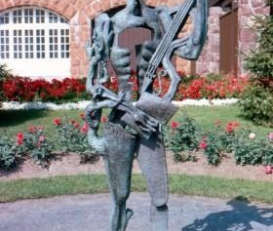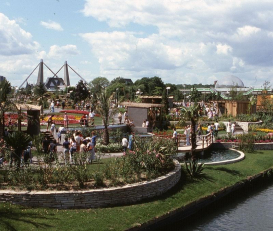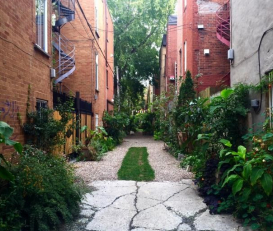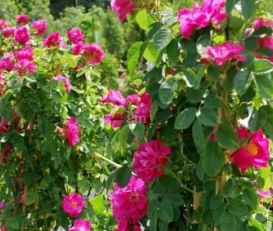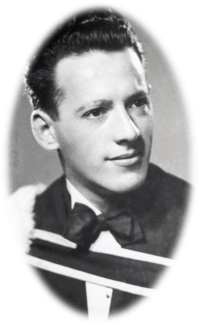
In 1638, Guillaume Couture emigrated from Rouen, France, to settle on a seigneury near Levis, Québec. Fully three centuries later, young Ulric Couture’s family was still based near the ancestral home in nearby Charny, and Ulric had begun to take the train to high school in Ottawa. He went on to graduate from Oka Agricultural Institute in Québec (University of Montréal, BSA, 1948), and then was on his way again, to Ithaca, New York.
Ulric was determined to follow in the footsteps of the landscape architect he admired most: Louis Perron, the first Québecer to study at Cornell. Although Ulric spoke almost no English, his parents were confident in his talent, and sold the family car to support his study (Landscape Architecture, 1948-51).
Just a year after graduation, Couture joined the City of Montréal Public Works and Parks Department, where he would remain until he retired in 1984. It was an auspicious time to be a landscape architect in Montréal. With his close friend André Chartrand (Fellow, 1989), and their fellow Cornell graduate André Lafontaine, Couture would form “the nucleus of the future design team of Montréal’s Park Department,” wrote historian Ron Williams, which was “destined to be for many years the largest landscape architectural office in Canada.” All three would become founding members of the AAPQ. Their work over three decades would change the face of Montréal.
In the 60s, with the city a-buzz with preparations for Expo 67, Couture could indulge his enthusiasm for roses (the Expo Roseraie and Sculpture Garden). He was entrusted with the landscaping for the Olympic Stadium for the XXI Olympiad (1976), then worked on the great Floral Exhibition of 1980, showcasing modern landscaping.
Couture, who was calm and affable by nature, was passionate about his work, particularly his trees. “Ulric Couture was a hands-on man,” said long-time colleague and historian Jacques Lafrenière. “He came to the nursery to choose his trees on site.” It was he who integrated the Drummondii (variegated) maple into the gardens of the city. His signature is still clearly recognizable today, in the city’s twenty “Green Alleys” (Ruelle Verte), built in the 80s, with their variegated maples, and the beautiful Ginkgo biloba, which he had promoted for a decade. And today, Blvd. Gouin, the cycle path he helped create along one of Canada’s oldest routes, still weaves its way through its remarkable setting along the Rivière des Prairies.
In retirement, Ulric remained active, teaching at University of Montréal, serving as a consultant for his adopted city of St. Bruno, working with Beautification Committees and Houses in Bloom competitions. His passion remained his garden, particularly the beautiful, profusely blooming climbing rose, the John Cabot. His tombstone reads, simply, “The Man Who Planted Trees.”
NOTE:
Much of this information was gleaned from an article prepared for the Club Iris (Montréal Botanical Garden retirees) for the club newsletter, “L'Iris” (CIEJBM). Members Yvette Petibois-Paillé and Normand Miron interviewed Ulric’s Couture’s daughter, Isabelle Couture, and also included testimonials from Maurice Beauchamp, Pierre Bourque and Jacques Lafreniere.
For the full text, click here.
SOURCES AND PHOTOS
Ron Williams. Landscape Architecture in Canada. McGill-Queen’s University Press, 2014.
PHOTOS
1 Boulevard Gouin Cycle Path, west of Montréal
2 Biosphère, 1968. Archives of the City of Montréal.VM94_264_Exc-0002
3 Rose bushes with the bronze statue of Ossip Zadkine, titles Le poète (The Poet), or Hommage to Paul Eluard. Gilbert Ouellet, 1967. Archives of the City of Montréal. (P123_1P033)
4 Montréal International Floralies: Ile Notre-Dame (40 hectares of gardens)
5 Ruelle Verte: The City joined with the Montréal Botanical Garden to create 20 Ruelles Vertes (Green Alleys), designed by Parks department LAs
6 The John Cabot rose bush
